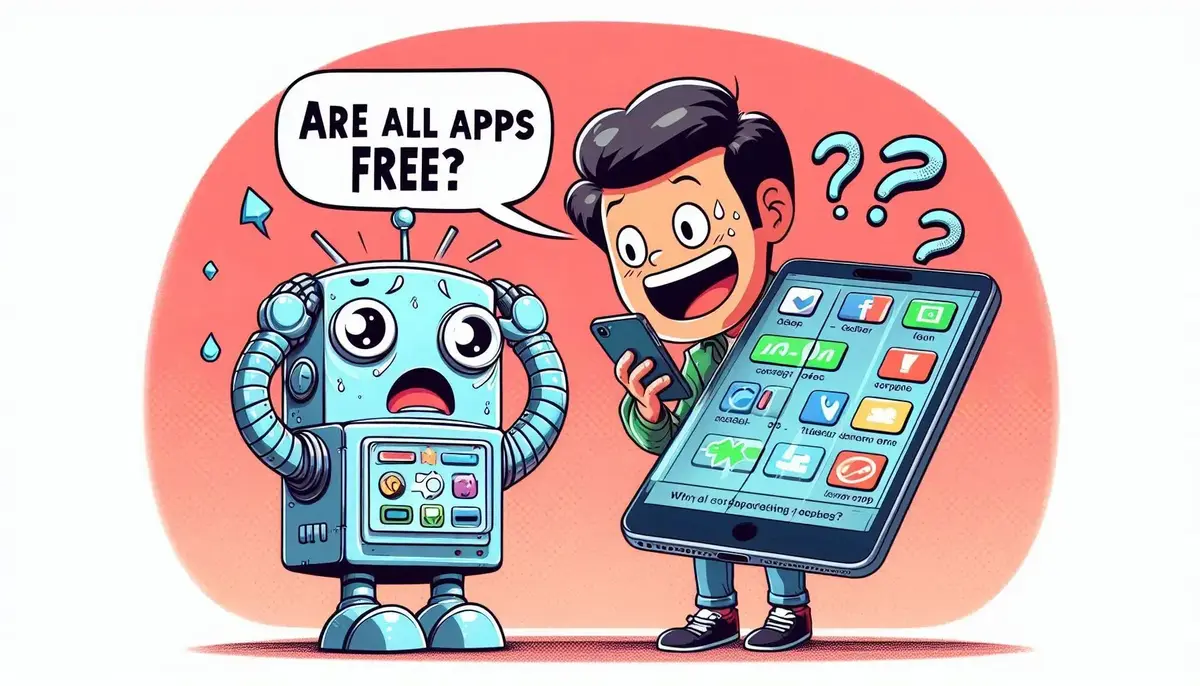In this day and age apps have become a regular element to our daily lives. From entertainment and social media to education and productivity There is an app for every aspect. One problem that is asked is “Are all apps free?” The answer isn’t as simple as one would imagine. Although many apps are available at no cost, others are with a cost. Let’s dive deeper into this world to discover the different kinds of pricing models for apps.
FREE APPS
Free apps are exactly as they sound like. They are downloaded, installed and used with any cost at all. They are usually backed by advertisements or provide in-app purchases to earn income. Some examples of the most popular free apps are social media platforms such as Facebook and Instagram messaging applications like WhatsApp and games like Candy Crush.
AD-SUPPORTED APPS
A large number of free apps rely on ads as their main source of income. You may encounter advertisements as pop-ups, banners, or videos. While advertisements can be disruptive but they permit developers to provide their apps at no cost. Certain apps also provide an ad-free option for the cost of a small amount.
FREEMIUM MODEL
A freemium-based model has become yet another well-known method. In this type of model, the app will be free for download and install but it provides additional features or other content through in-app purchases. For instance games may be played for free, however, players are able to purchase additional lives, items that are special, and premium level. Apps such as Spotify and Dropbox are a good example that offer basic features for free, while providing premium features with an annual subscription.
PAID APPS
Paid apps require users to pay for them in advance before they are loaded and used. They usually provide an enhanced experience with no ads or in-app purchase. The cost of paid apps can be wildly different in price, ranging from a few dollars or a couple of dollars based on the app’s features and features. Examples of paid applications include specific tools for productivity and photo editing software and professional-specific apps.
SUBSCRIPTION-BASED APPS
Subscription-based apps are becoming more frequent, particularly for services that require ongoing updates as well as support. Instead of making a single purchase, customers pay a monthly or yearly fee (monthly or annually) to use apps and features. This is a popular model among streaming services such as Netflix and Spotify as well as cloud storage providers such as Google Drive and Microsoft OneDrive.
BENEFITS OF SUBSCRIPTION MODELS
The subscription model is beneficial to both developers and users. Users have access to frequent update, the latest features as well as customer support, and developers get a steady stream of revenue to keep and enhance the application. It is important that users evaluate if the cost of maintaining the app is worth the benefits they get from the application.
IN-APP PURCHASES
IAPs or in-app purchases (IAP) let users purchase additional features or content within the application. These could range from power-ups, virtual currency in games, to premium features within productivity apps. In-app purchases are an important source of income for developers, particularly in games that are free to play. However, they’ve also been accused of inducing an “pay-to-win” mentality in some instances.
TYPES OF IN-APP PURCHASES
In-app purchases are classified as consumables or non-consumables. Consumables are things that are able to be used in virtual currency or health potions within the game. After use, they have to be bought again. Non-consumables, on contrary, are single-use purchases that offer a long-lasting benefit, like removing advertisements or unlocking premium features.
CONCLUSION
In the end there are a few apps that are free. The market for apps is diversified and offers a variety of pricing options to meet the needs of different users and preferences. Although free apps that are that are supported by advertisements as well as in-app purchase are plentiful but there are also subscription-based and paid apps that offer premium services. Understanding these models allows users to make educated choices regarding the apps they decide to download and install. So, next time you visit your options in the App Store, be sure to think about the cost and benefits each app can provide to ensure you have the most enjoyable experience.
